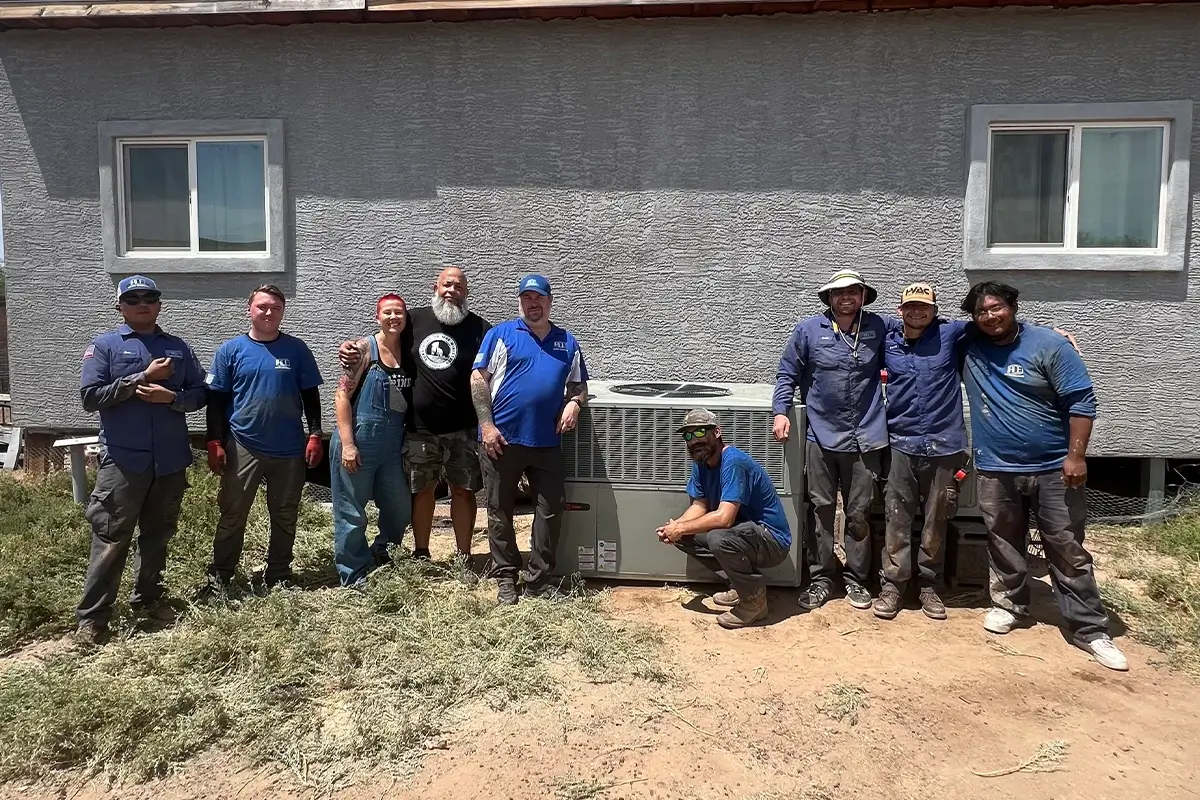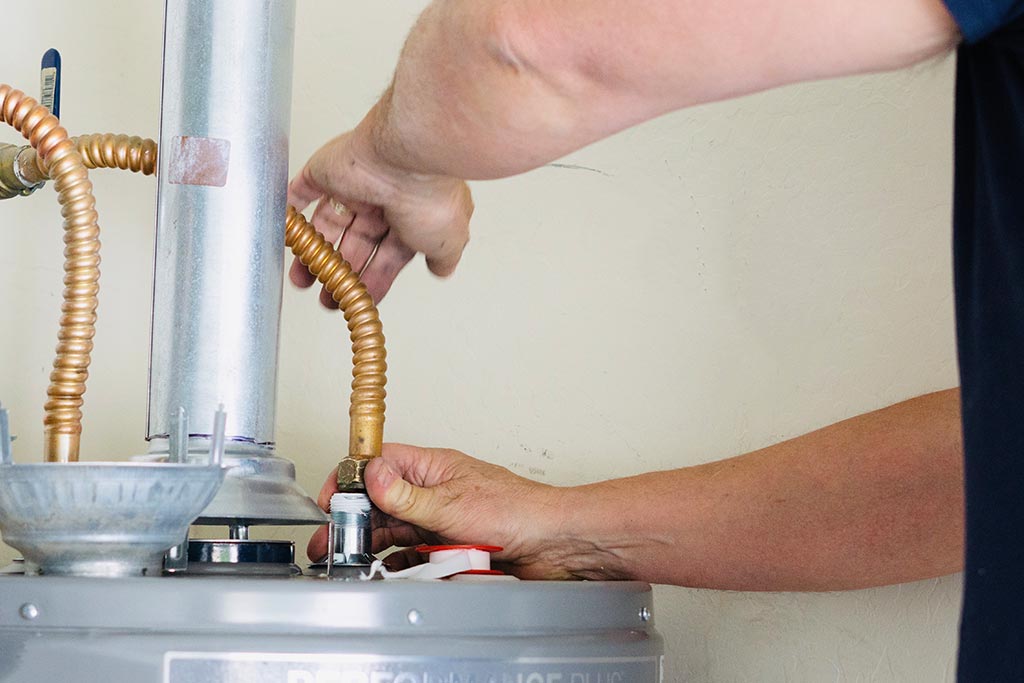
When it comes to keeping your Flagstaff home comfortable, understanding your HVAC system is key. However, the terminology can be confusing. Knowing common HVAC terms can help you better describe issues and understand what technicians are talking about. Whether you’re setting up a service appointment or dealing with an unexpected breakdown, having a grasp of these terms can make everything smoother. This guide from ACE Home Services is here to help you make sense of it all.
Introduction to HVAC Terminology
You might wonder, what HVAC terms do I need to know? Terms like “air handler” and “compressor” often come up when discussing AC systems. For heating, words like “furnace” and “heat pump” are frequently mentioned. Then there’s the often-overlooked ductwork, with terms like “ducts” and “registers” that are crucial for efficient airflow.
Understanding what these terms mean isn’t just about becoming more knowledgeable. It’s about ensuring you can communicate effectively with your HVAC professionals. For instance, if you know what a “SEER rating” is, you can make informed decisions about the energy efficiency of your AC unit. Recognizing the difference between R-22 and R410A refrigerants can help you understand environmental impacts and potential costs.
When you’re informed, it’s easier to ask the right questions and understand the answers you get. This can lead to quicker diagnostics and potentially save you money on repairs or replacements. Knowing the basics can also help you feel more confident when discussing your HVAC system, making the whole process less stressful.
Common AC Terms
Air conditioning (AC) systems have their own set of terms that you might hear from your technician. Knowing what these terms mean can make a huge difference in understanding your system and what it needs.
– Air Handler: Think of this as the indoor unit that circulates the air throughout your home. It’s a central part of a system that keeps your indoor climate comfortable.
– Compressor: Located in the outdoor unit, the compressor pumps refrigerant through your system. It’s essential for the cooling process.
– Condenser: Also in the outdoor unit, the condenser releases or collects heat depending on the cycle. It works in tandem with the compressor to cool your home.
– Refrigerant: This is the chemical that cools the air in your AC. You might hear about R-22 or R410A; the latter is more eco-friendly and is becoming the standard.
– SEER (Seasonal Energy Efficiency Ratio): This rating measures how efficiently your AC unit uses energy. A higher SEER rating means better energy efficiency, which can save you money in the long run.
Understanding these terms can help you communicate more effectively with your technician. For instance, if you know what the compressor does, you’ll have a better grasp of why a malfunctioning compressor could be a big deal. Similarly, recognizing the importance of the SEER rating can help you make informed decisions when it’s time to upgrade your unit.
When you’re informed, it’s easier to describe any issues you’re experiencing, making it simpler for your ACE Home Services technician to diagnose and fix the problem quickly.
Essential Heating Terms
As the temperatures start to drop in Flagstaff, knowing your way around heating terms can make a world of difference. Let’s break down some of the essentials you’ll come across.
– Boiler: Unlike a furnace, a boiler heats water to produce steam or hot water, which then heats your home. This can be an efficient way to keep things warm, especially in older homes with radiator systems.
– Furnace: Think of the furnace as the heart of your heating system. It’s responsible for generating heat, whether it’s through air, water, or steam, and distributing it throughout your home.
– Heat Exchanger: This is a critical part inside the furnace. Its job is to transfer heat to the air, ensuring your home stays warm and comfortable.
– Heat Pump: A heat pump is a bit of a multitasker. It can both heat and cool your home, making it an energy-efficient choice, especially in milder climates.
– R-value: When you hear about R-value, it’s all about insulation. The higher the R-value, the better your insulation is at resisting heat flow, which means a cozier home in winter.
Getting familiar with these terms can make your conversations with HVAC professionals much more productive. For example, if you understand what a heat exchanger does, you can better appreciate why it’s crucial for your furnace’s operation. Similarly, knowing about R-value can help you make informed decisions about improving your home’s insulation.
By grasping these heating terms, you’ll be better equipped to keep your home comfortable throughout the colder months. So, the next time your ACE Home Services technician mentions a furnace or boiler, you’ll know exactly what they’re talking about.
Understanding Ductwork Terminology
Ductwork plays a crucial role in how your HVAC system distributes air throughout your home. While it’s often tucked away behind walls and ceilings, understanding some key ductwork terms can really help you maintain your system’s efficiency and address any issues that come up.
– Dampers: Found inside the ducts, dampers can open or close to regulate airflow. They’re particularly useful in zoning systems where different areas of your home need varying temperatures.
– Ducts: Think of ducts as the highways for your HVAC system. They transport air from your system to different parts of your home. Keeping these pathways clean and sealed is essential for optimal airflow and energy efficiency.
– Plenum: This is a box that connects the HVAC system to the ducts. It acts as a central distribution point for air. A well-maintained plenum helps keep the airflow consistent and efficient.
– Registers: These are the vents you see on walls, floors, or ceilings. They allow the conditioned air to enter your rooms. Some registers are adjustable, letting you control the amount of air that flows into a space, which can help balance temperatures throughout your home.
– Return Air Vent: This vent pulls air from your living spaces back into the HVAC system to be heated or cooled again. Efficient return air vents are key to maintaining balanced airflow and ensuring your system operates smoothly.
Understanding these terms can make a big difference when you’re discussing airflow problems or duct cleaning with a technician. When you know what each component does, you can more accurately describe any issues, making it easier for professionals to diagnose and fix problems efficiently. So next time you talk about your HVAC system, you’ll have the ductwork lingo down pat.
The Importance of Clear Communication
When it comes to dealing with HVAC issues, clear communication with your technician from ACE Home Services is crucial. Knowing terms like “compressor,” “SEER rating,” and “R-22” not only helps you understand what’s happening with your system but also enables you to describe problems more accurately. This means your technician can diagnose and fix issues more quickly and efficiently.
Imagine scheduling a service call because your AC isn’t cooling properly. If you can tell your Flagstaff technician that you suspect an issue with the “air handler” or “compressor,” you’re already ahead of the game. The technician will know where to start looking, which can save both time and effort. Similarly, understanding what “R-22” or “R410A” refrigerants are can help you discuss potential environmental impacts or costs associated with these chemicals.
Effective communication goes both ways. When your HVAC professional from ACE Home Services explains what needs to be done, understanding terms like “ducts,” “plenum,” and “dampers” ensures you know exactly what’s happening and why. This can help you make informed decisions about repairs, upgrades, or maintenance.
Being familiar with heating terms is equally important. If your technician mentions that the “heat exchanger” in your furnace needs attention, you’ll understand its critical role in keeping your home warm. Knowing what a “boiler” or “heat pump” does can also help you grasp why certain recommendations are made.
In short, having a good handle on HVAC terminology enhances your ability to communicate effectively, ensuring you get the best possible service for your home’s comfort and safety.
Conclusion and Next Steps
Understanding HVAC terminology may feel overwhelming, but it’s definitely worth your while. With the right knowledge, you’ll navigate service appointments with greater confidence and help ensure your system runs smoothly. Start by getting comfortable with the terms we’ve discussed here, and don’t be afraid to use them when speaking with your HVAC technician from ACE Home Services.
If want more information, plenty of resources are available. HVAC handbooks and online courses can provide more detailed information, helping you become even more knowledgeable about your home’s system. This can be especially useful if you’re planning any upgrades or considering a new system.
Remember, good communication is a two-way street. The more you understand about your HVAC system, the better you can describe issues and understand the solutions your technician offers. This not only speeds up the repair process but can also save you money by preventing misdiagnoses and unnecessary repairs.
Take the time to familiarize yourself with these terms and concepts. Your effort will pay off in the form of a more efficient, reliable HVAC system, and ultimately, a more comfortable home. So next time you have an HVAC-related question or issue, you’ll be well-prepared to discuss it intelligently and effectively.







